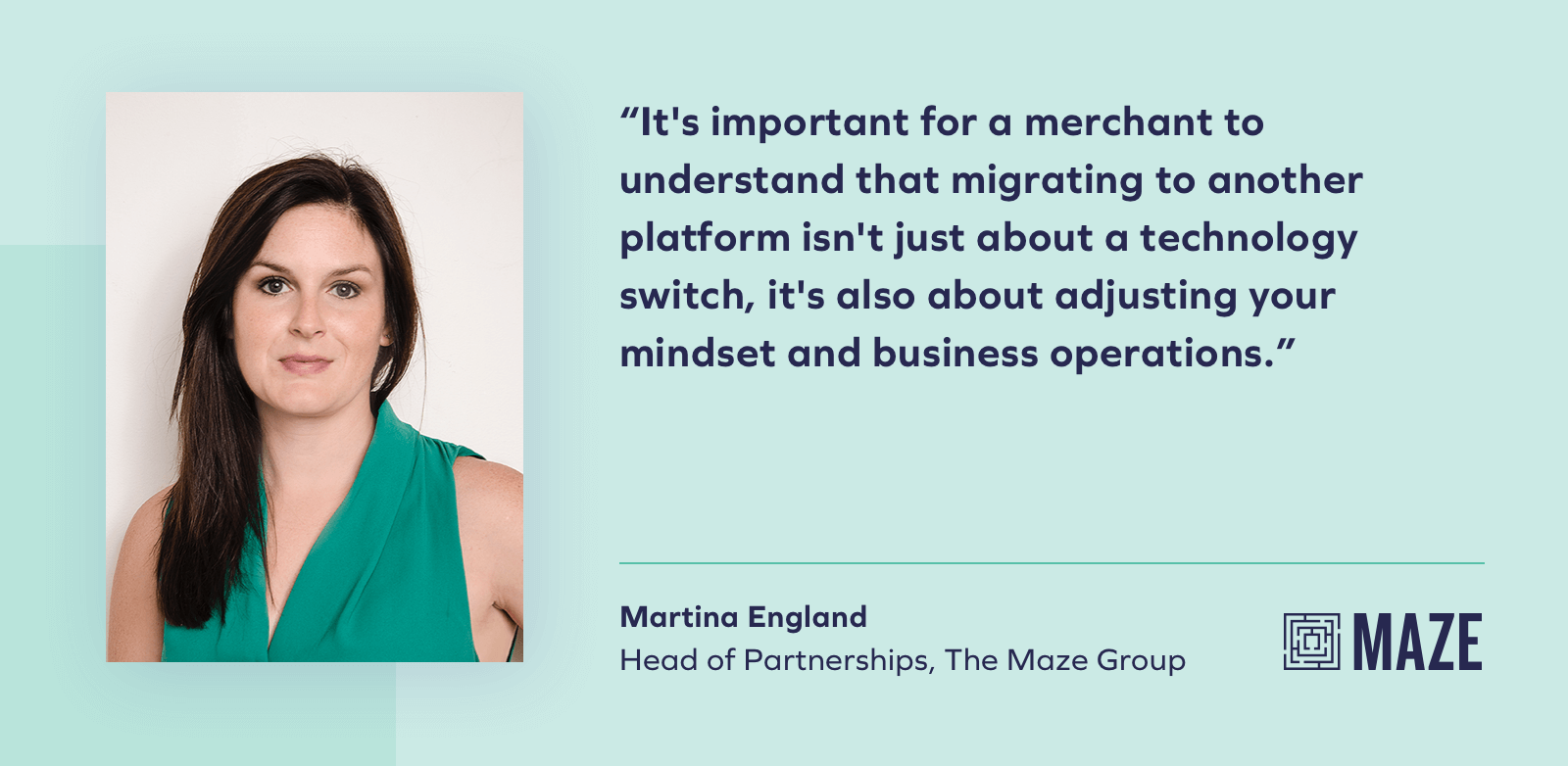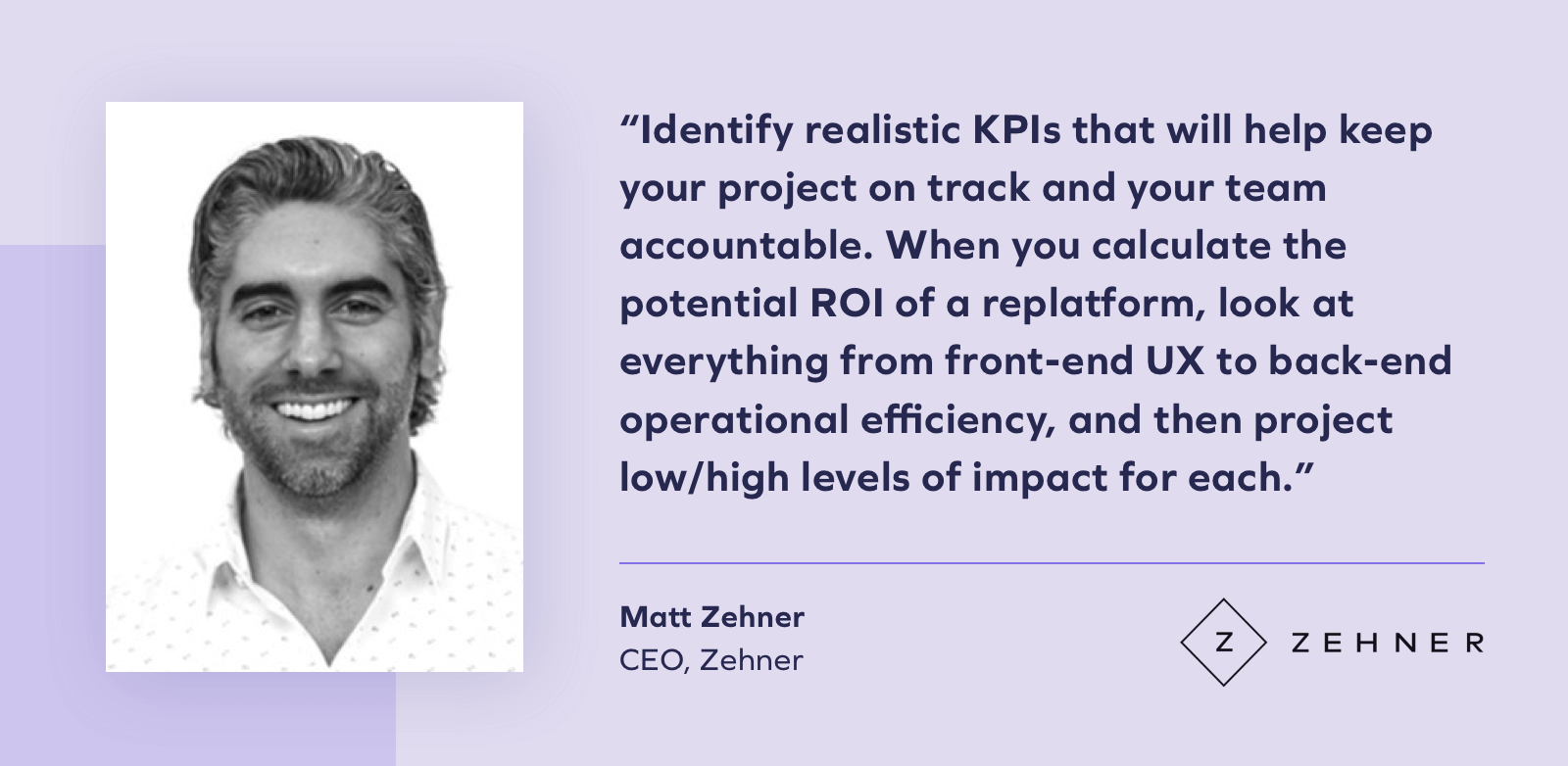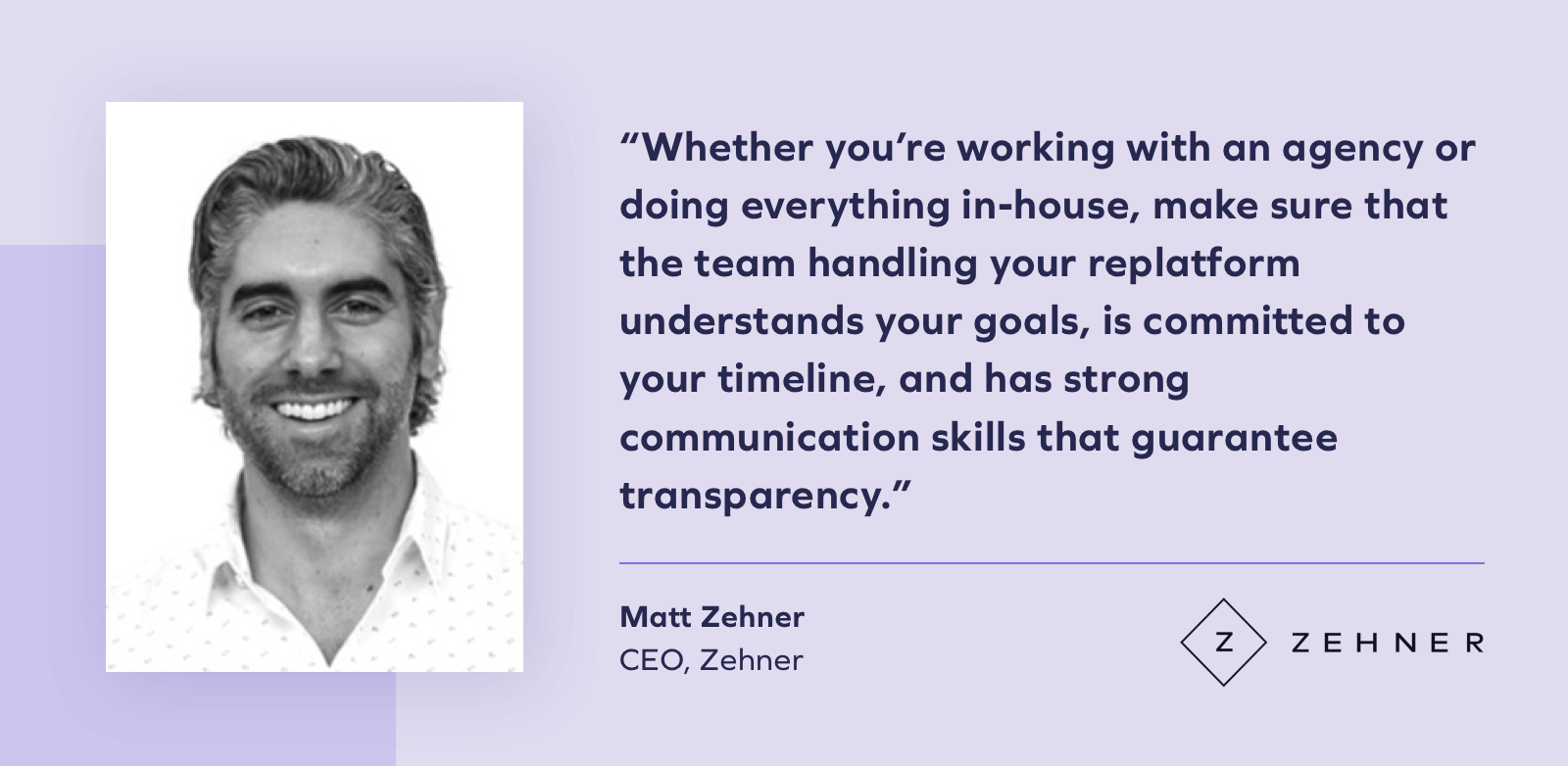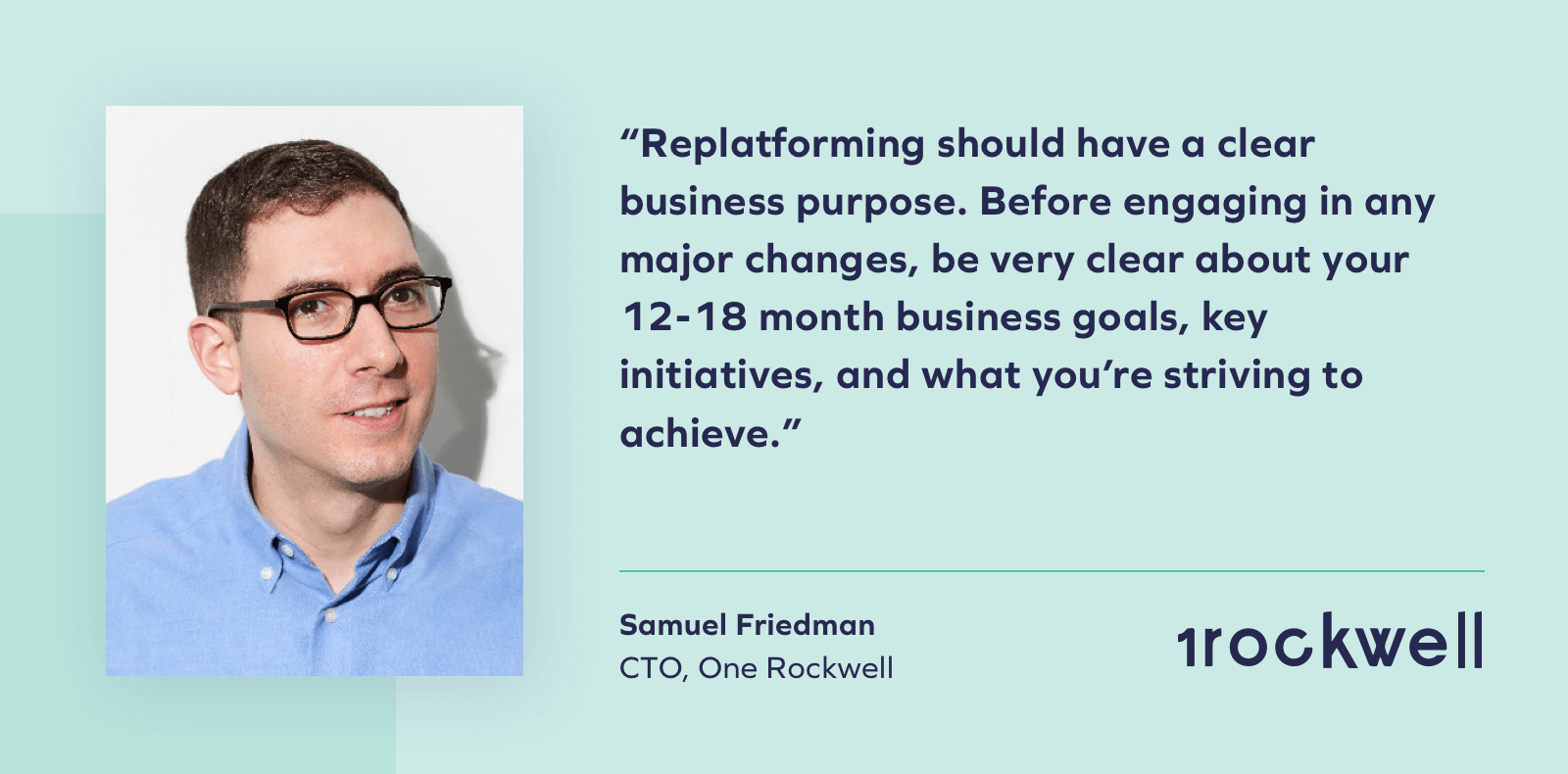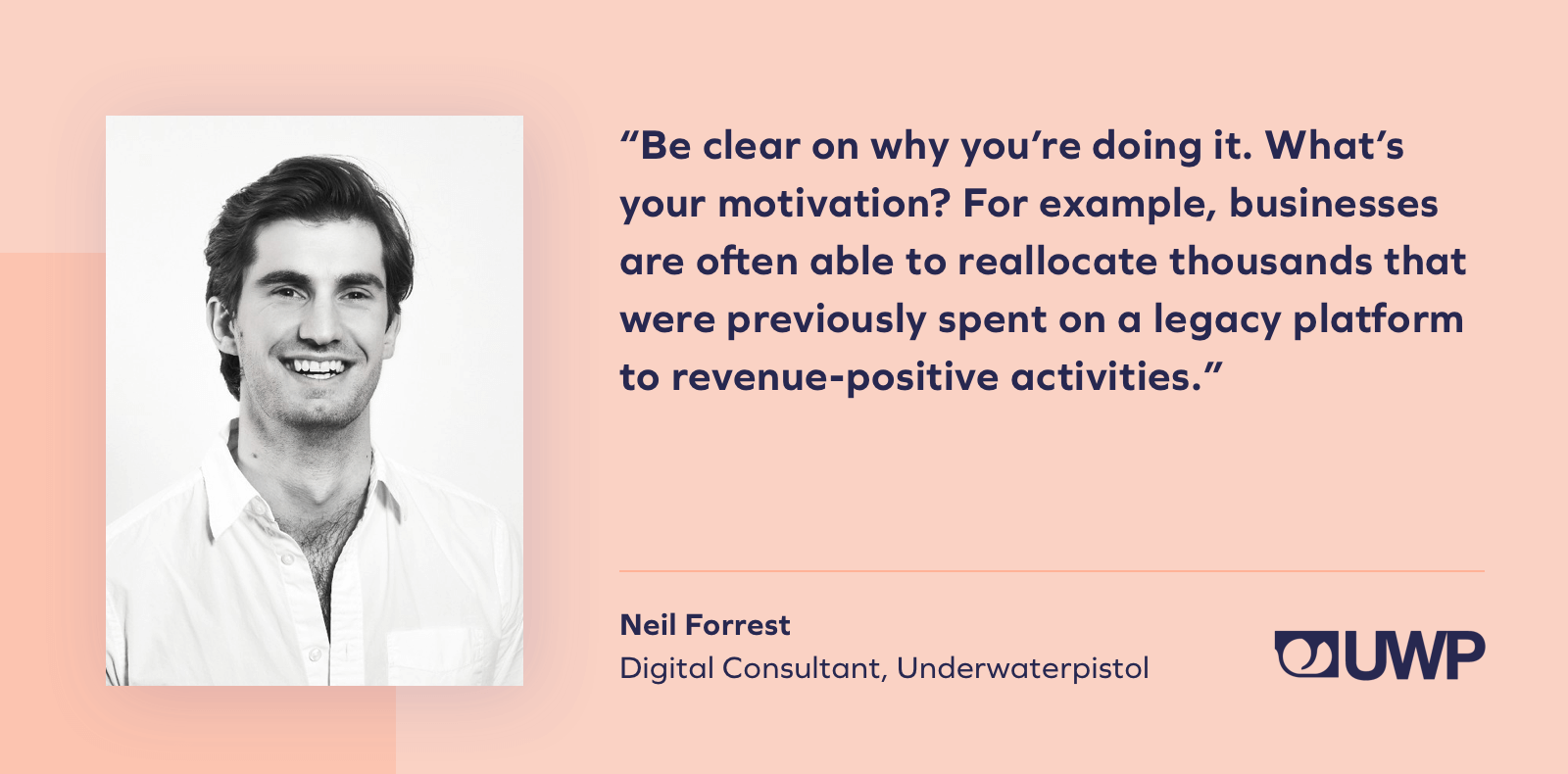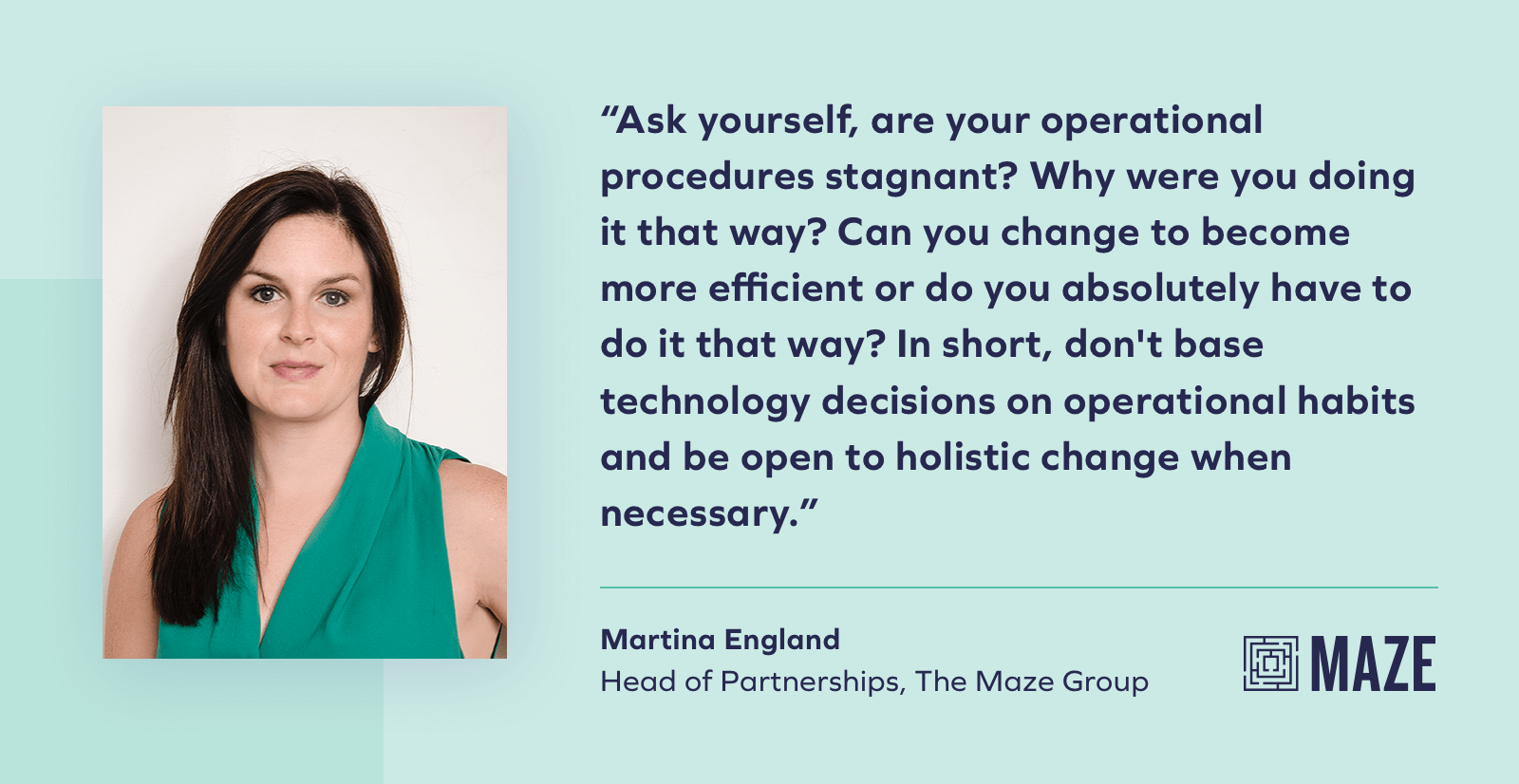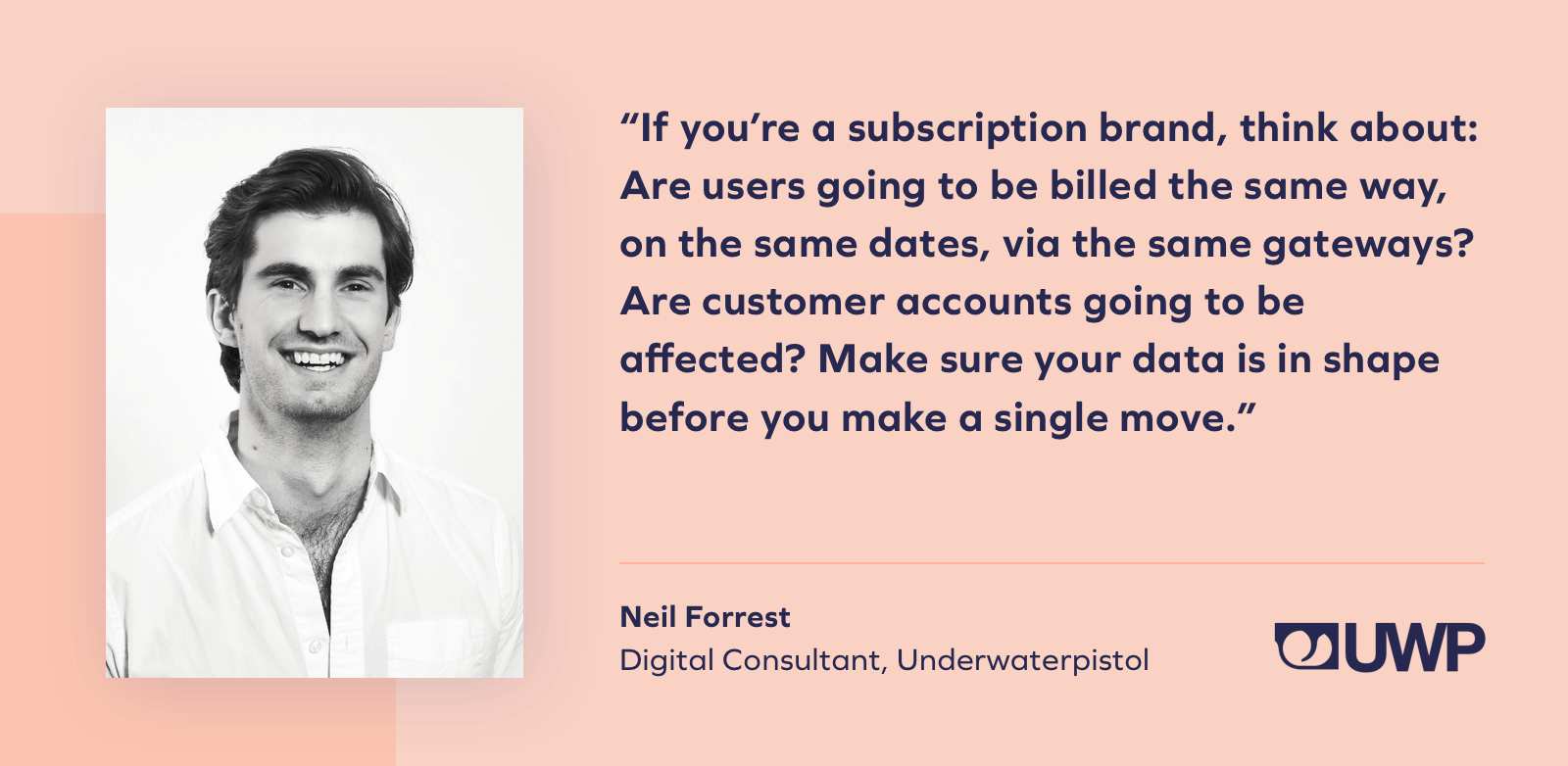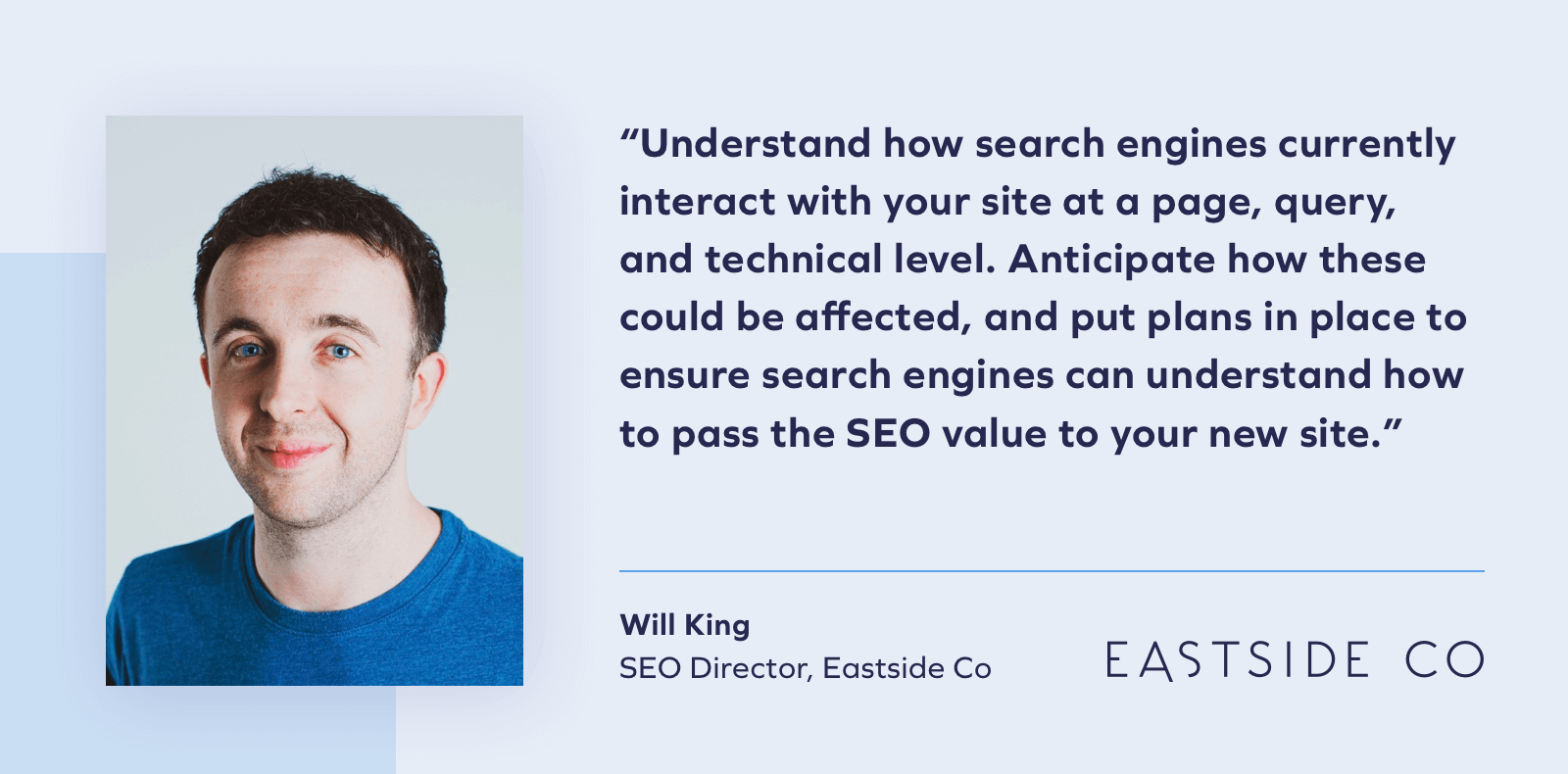Outgrowing your eCommerce platform is exciting. Your business is maturing, and you need a platform that’s able to not only handle your growth, but to scale with you as that growth continues.
However, replatforming, or moving from one technical system to another, can be a confusing process. While consolidating your tech stack in this way ultimately leads to more efficient, data-driven marketing efforts, the migration can feel like yet another project you’re tacking on to your already busy schedules.
“eCommerce has exploded over the past year and a half,” says Matt Zehner, CEO, Zehner. “The opportunity for growth in this channel has no limit right now, and a brand’s tech stack is the foundation that allows them to recognize this growth. The process to replatform is not always an easy one, but it’s one that is often inevitable at some point in a brand’s journey as they grow and mature.”
For brands in this growth stage, an easy-to-understand solution is key. We spoke to the experts — our partners! — and asked them for their top tips and strategies for brands to consider as they begin the replatforming process.
Align on motivations and expectations
It’s important to be sure that replatforming will have a positive impact on your business. Currently, you may be using multiple applications or solutions to run your business, and they’re likely disconnected from each other. That siloed data leads to efficiency issues for your team on the back end, and disconnected experiences for your customers on the front end — but consolidating those solutions onto a more robust platform can solve that issue. If your team is ready to scale onto a new platform, it’s essential to align with all stakeholders to present the reasons for moving, clarify any questions, and set expectations for the process ahead.
“No single platform will fulfill all of your business requirements in the way you expect or have come to function within the organization,” says Martina England, Head of Partnerships, The Maze Group. “For example, digitally native businesses may have set up accounting or customer service functions based on how their starter eCommerce platform worked.”
It’s essential to set realistic, achievable goals for your brand’s replatforming process to ensure you’re setting out on a necessary project. “Crafting the most honest and compelling solutions for these [ROI] impact factors is fundamental to the short-term and long-term success of any replatform,” says Zehner.
Select the right partner to walk you through every step of the process
Your replatforming launch partners and strategists will help you understand and plan the transition. With an experienced team leading your migration to a new platform, your brand should expect overall better performance, increased results, more efficient business operations, and a better user experience.
While it might seem like a large-scale investment to partner with a team of strategists, it’s important to keep in mind the importance of a platform migration for your brand. “Remember that replatforming is an investment in growth,” says Zehner. “Technical debt paid down, technology stack upgraded and streamlined, UX and new features refined; all of these are benefits that contribute to the ROI of a replatform and can help you justify the expense of this investment.”
In addition, ensure all stakeholders are on board, and prepare them with the timeline and scope of work required to complete the process. Assess the cost of replatforming alongside the intended outcomes, and ensure your brand is going to see high-value improvements once you’ve migrated to the new platform.
“Replatforming begins with an open dialogue to discuss and understand how and why,” says Samuel Friedman, CTO, One Rockwell. “How will a replatform impact your business goals and objectives at hand currently but also in the future? It is not as cut and dry as ‘we must replatform now’ or ‘we cannot replatform now,’ but a more exploratory discussion on how a replatform will both enable and challenge current and future business goals and objectives. The technology platform(s) exist to serve the business’ strategic goals. Start from these goals and engage with the grey area — the complex upside and downside is a reality.”
In short, make sure you’re choosing a tech provider that acts as a partner in all things you need, whether that’s troubleshooting the little things or supporting even the niche but important aspects like accounting and liability.
Get your data in line before the migration
Prepare your site so you can transfer your content over to the new site. There are, according to Shopify, three major categories that you need to have completed or moved over prior to launch: products, customers, and orders. Orders are optional to import if you want your previous systems’ historical records. For example, you may want to move over information that a specific customer bought size 10 boots six months ago.
“When it’s time to replatform for growth, that new platform may not have the same back office functionality,” says Martina England, Head of Partnerships at The Maze Group. “Many merchants see this as a reason to disqualify a platform or perform costly customizations, and while that cannot always be avoided, those merchants should also take a platform migration as a chance to evolve their business practices and strategy as a whole.”
In addition, complete a content audit prior to the migration to ensure you’re only transferring over what you need. Shed any outdated or irrelevant content to streamline the process and start fresh on the new platform. It’s best to start the migration during a typically low-traffic time on your site to ensure you can mitigate issues and lessen the risk of disrupting conversion.
Put plans in place for your SEO strategy
Make sure you crawl your site prior to replatforming to catalog all the relevant content and account for your data. Many brands fail to consider the SEO impact that a migration might have on their brand’s content, so it’s important to keep this step in mind to prevent any indexing issues down the line. “If managed correctly,” says Carla Write, Merchant Engagement Lead, Shopify Plus, “the changes you make to your SEO while replatforming may impact your business a little bit in the first couple of weeks but then obviously that will recover.”
“Planning and preparation are the most important factors in a successful migration,” says Will King, SEO Director, Eastside Co. “A migration is a significant event, and as search engines process and re-evaluate your website post-migration, there can be disruption to your search engine rankings.”
Keep an eye on how your site is functioning on the day of launch
When the day comes for the launch of your new site, ensure you have team members monitoring the activity and usability of your old site. Test your checkout gateway, notifications (both email and SMS), and marketing and reporting dashboards. Does everything seem to be functioning as it should?
According to Shopify, your platform provider should also walk you through the process to figuratively “flip the switch” to launch your new site via your Domain Name System (DNS). Josh Thomson, Launch Expert at Shopify Plus, recommends “logging into your domain registrar account and changing the Time to Live (TTL) to the lowest value that your host will allow (normally 300 seconds) to a week prior to the launch.” For more technical guidance, your team should consult with your launch partner.
Ready to replatform?
Replatforming is the ideal time to consider consolidating your entire tech stack, including your marketing solutions.
As you migrate onto your new eCommerce platform, look to Yotpo’s platform of integrated eCommerce marketing solutions to scale with (and drive!) your continued growth. Learn more here.




